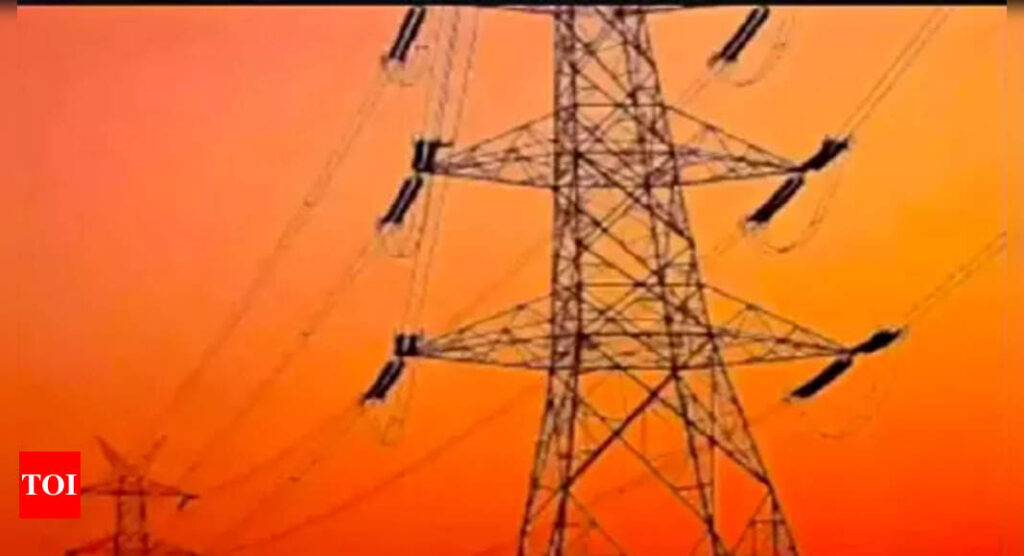[ad_1]
India witnessed a surge in electricity demand, hitting a historic high last week. The upswing was driven by scorching temperatures and increased irrigation needs in certain regions grappling with deficient monsoon rains. On August 17, the power grid successfully met a peak demand of 234 GW, marking an all-time record, reported ET. This figure exceeded the summer projection of 229 GW predicted by the power ministry‘s planning cell.
May’s heat was milder than expected due to unusual rainfall, with the maximum met demand standing at 221.7 GW, according to the Grid Controller of India.
June saw the peak demand met climbing to 223 GW. Besides the recent peak on August 17, notable surges occurred this month, with August 10 hitting 224.8 GW and August 11 reaching 228.9 GW.
This surge in August’s demand was attributed to parched conditions in some regions and humid weather. While an underlying rise in demand due to economic activities was evident, the dry spell in certain areas contributed to the spike this August, an industry expert noted.
Cooling appliances and irrigation emerged as the primary drivers of this heightened demand, experts emphasized.
A government official highlighted regional variations in rainfall, pointing out delayed rain in parts of northwest and peninsular India, contrasted by heavy rain in the east, central, and northeast.
Correspondingly, prices in the day-ahead market on the IEX power exchange climbed alongside the mounting demand. The closing price on August 18 stood at Rs 9.2 per unit, compared to Rs 5.1 per unit on August 1. The closing price reached Rs 8 per unit on August 21.
Although the maximum power demand dipped over the weekend to 214 GW from the previous week’s highs, experts believed that the possibility of ongoing dry conditions in certain regions could keep demand elevated until the end of August.
At the outset of the year, the power ministry anticipated increased summer demand and directed power generation firms to blend imported coal. The government also mandated full-capacity operation for imported coal-based plants and facilitated & advised efficient coal transport via rail-sea-rail routes.
In February, India experienced its hottest February in a century, leading to concerns about meeting expected summer demand. However moderate weather in March to May led to lower-than-expected coal consumption in power plants.
This helped in adequate coal stocks even as the monsoon season commenced, which typically slows coal production.
August witnessed a slightly quicker depletion of coal stocks at power plants – with stocks dropping from 34.9 million tonnes to 32 million tonnes within the initial 20 days of the month.
A government official reassured that despite the decline, coal stocks remained satisfactory for August. The outlook for September hinges on evolving demand patterns.
Preparations were made for a peak demand of 231 GW, while the actual peak was 234 GW. While coal supply remains manageable, plants can generate up to 168 GW without constraints. Beyond that, additional capacity has to be available, the official said.
May’s heat was milder than expected due to unusual rainfall, with the maximum met demand standing at 221.7 GW, according to the Grid Controller of India.
June saw the peak demand met climbing to 223 GW. Besides the recent peak on August 17, notable surges occurred this month, with August 10 hitting 224.8 GW and August 11 reaching 228.9 GW.
This surge in August’s demand was attributed to parched conditions in some regions and humid weather. While an underlying rise in demand due to economic activities was evident, the dry spell in certain areas contributed to the spike this August, an industry expert noted.
Cooling appliances and irrigation emerged as the primary drivers of this heightened demand, experts emphasized.
A government official highlighted regional variations in rainfall, pointing out delayed rain in parts of northwest and peninsular India, contrasted by heavy rain in the east, central, and northeast.
Correspondingly, prices in the day-ahead market on the IEX power exchange climbed alongside the mounting demand. The closing price on August 18 stood at Rs 9.2 per unit, compared to Rs 5.1 per unit on August 1. The closing price reached Rs 8 per unit on August 21.
Although the maximum power demand dipped over the weekend to 214 GW from the previous week’s highs, experts believed that the possibility of ongoing dry conditions in certain regions could keep demand elevated until the end of August.
At the outset of the year, the power ministry anticipated increased summer demand and directed power generation firms to blend imported coal. The government also mandated full-capacity operation for imported coal-based plants and facilitated & advised efficient coal transport via rail-sea-rail routes.
In February, India experienced its hottest February in a century, leading to concerns about meeting expected summer demand. However moderate weather in March to May led to lower-than-expected coal consumption in power plants.
This helped in adequate coal stocks even as the monsoon season commenced, which typically slows coal production.
August witnessed a slightly quicker depletion of coal stocks at power plants – with stocks dropping from 34.9 million tonnes to 32 million tonnes within the initial 20 days of the month.
A government official reassured that despite the decline, coal stocks remained satisfactory for August. The outlook for September hinges on evolving demand patterns.
Preparations were made for a peak demand of 231 GW, while the actual peak was 234 GW. While coal supply remains manageable, plants can generate up to 168 GW without constraints. Beyond that, additional capacity has to be available, the official said.
[ad_2]
Source link











More Stories
India’S Growth Forecast: S&P ups India’s FY’24 growth forecast to 6.4% on robust domestic momentum
India to remain fastest-growing major economy, but demand uneven: Poll
Jack Ma: Jack Ma gets back into business with ‘Ma’s Kitchen Food’